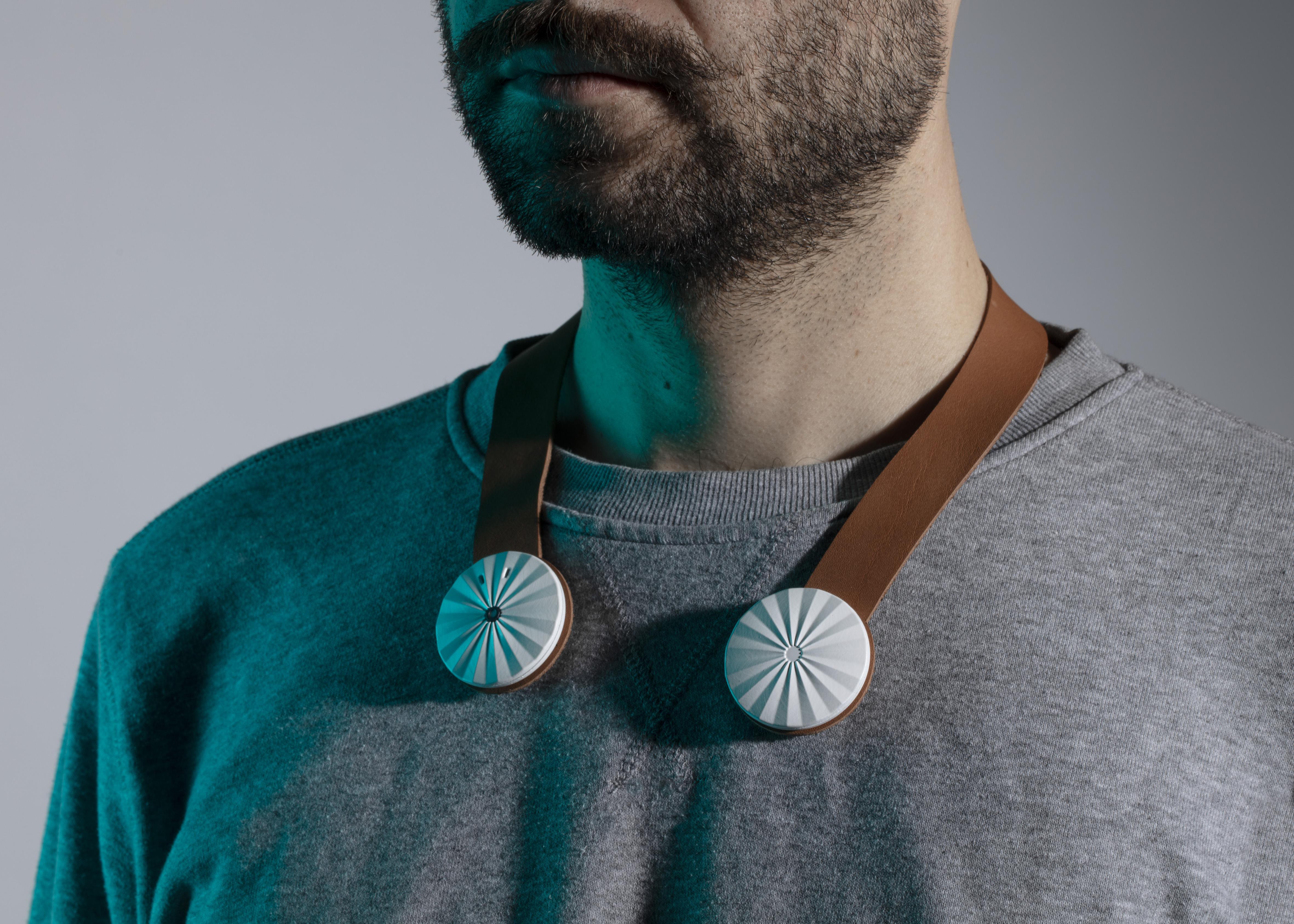École polytechnique fédérale de Lausanne (EPFL) together with Geneva School of Art and Design (HEAD – Genève) developed a wearable sensor that measures how much light an individual is exposed to along with the spectral resolution of that light.
The wearable sensor, named “Spectrace,” can detect the amount of light one person receives by being put around the neck like a pair of headphones or attached to an item of clothing with a magnetic pin.

(Image: EPFL)
Scientists have taken a growing interest in how a shortage of natural light and excessive exposure to artificial light from screens affect our bodies. As a result, Professor Marilyne Anderson, director of EPFL’s Laboratory of Integrated Performance in Design (LIPID), considered it urgent to pay attention to ‘light hygiene.’
Various types of wearable light sensors exist on the market. Yet none of them can truly measure our exposure to the spectral range of light. Also, there is currently not enough data on the type of light to which we are actually exposed as a result of our daily activities and the environment in which we live and work. The research team is thus trying to develop a light exposure classification system.
At the same time, EPFL worked with Product and Media/interaction designers from HEAD – Genève at a workshop in July 2019 to come up with an attractive design that people would be happy to wear.
The project has just been awarded an InnoSuisse grant in the eHealth category. Earlier this year, the project received support through an Explorer Grant from the ENAC InnoSeed program at EPFL. This new funding will be used to develop a modular, working prototype and test it in real-world conditions by 2021, with the aim of founding a spin-off to bring the Spectrace sensor to the wider scientific community and the general public.





 CN
TW
EN
CN
TW
EN






